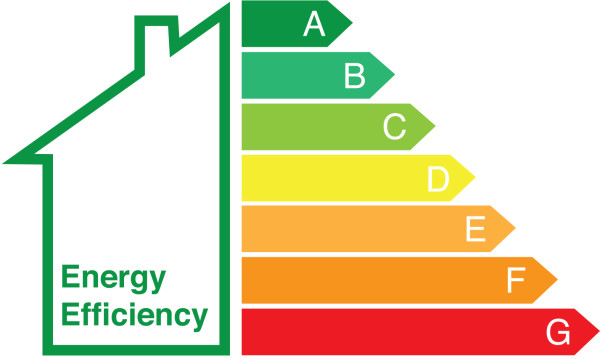
Landlords have been told to prepare for the new Minimum Energy Efficiency Standards (MEES) which come into force in April of next year, as part of the government’s wider plans to establish a low-carbon economy.
From the 1st April 2018, landlords will no longer be granted new leases (including renewals or extensions) for privately rented domestic and non-domestic properties which have an Energy Performance Certificate (EPC) rating below an E.
The new regulations couple with the release of the government’s Clean Growth Strategy (CGS) last month, which outline plans and policies that aim to ‘decarbonise’ all sectors of the UK economy, delivering increased economic growth through renewable and sustainable sources.
An EPC is a guide that lets landlords and homeowners know how much heating and lighting the property will cost, what its likely carbon dioxide emissions are, as well as recommendations on how to improve its energy efficiency.
Landlords should make sure they understand what this new legislation declares, auditing their current property portfolios to determine which fall within the new regulations, or whether they will need to register any exemptions. It should be noted that these exemptions would be valid for five years only.
Exemptions currently include (taken from EPC For You):
- Buildings that are exempt from EPC requirements, for example, places of worship, industrial sites, holiday lets and some listed buildings;
- Where required consents are not forthcoming;
- Where an independent surveyor determines that works would devalue the property by more than 5%;
- Where any energy efficiency improvements are deemed to be not cost-effective by an independent body; they would not pay for themselves through energy savings within seven years.
When these new regulations come into play next April, any homes with a rating of F or G, without a registered exemption, must be improved immediately or taken off the rental market. It’s imperative that landlords are beginning to put into motion their plans on meeting these higher standards, as failure to meeting the new requirements may result in penalties, which could leave their properties lying vacant.
Specifically, penalties for non-compliance can include:
- If the breach is less than 3 months – the greater of £5,000 or 10% of rateable value of the property, up to maximum of £50,000;
- For breaches of more than 3 months – the greater of £10,000 or 20% of rateable value of the property, up to maximum of £150,000;
- Publication of the penalty on public register;
- Risk not being able to let the property;
- Tenants can take steps if the landlord is not compliant.
The benefits and opportunities to landlords that comply with the new standards should be enough of an incentive to begin to implement energy efficiency improvement measures. For example, the rental and asset value of the property may increase, particularly if combined with additional refit upgrades.
Landlords may also benefit from engaging with tenants by entering a ’green lease’; an agreement regarding the environmental management and costs of the property, including energy efficiency improvements. Entering into this agreement would mean costs may be shared between the parties.
The best steps landlords can take right now, to make sure they aren’t caught out by the introduction of these new measures, would be by carrying out energy assessments to determine the EPC ratings for their properties are known, and correct.
They should also make sure they are up-to-date with the specifications of the legislature, including understanding lease terms, break dates, renewals dates and planned refit periods and how these are interconnected with the MEES.
In terms of specifics, landlords should first check for missing insulation in the roof and walls, along with fixing any drafts that are found in and around windows and doors. Quick fixes to bettering a property’s energy efficiency would include making sure light bulbs are low-energy or LEDs.
Failing to comprehend the impact of the MEES regulations could lead to future costs or non-compliance, potentially resulting in a loss of income if a property is unable to be put on the rental market.
Whilst these new changes might appear daunting, there are helpful options available. To assist landlords in making sure they are thoroughly prepared for the changes, the Department for Business Energy and Industrial Strategy has published guidance documents regarding the MEES, in accordance with the Energy Efficiency Regulations 2015.
In addition, there are numerous agencies specialising in helping landlords understand the MEES, advising them to make sure they are legally prepared.
With the likelihood that the measures proposed for next year will be raised in the future to cooperate with the government’s long-term economic plans, landlords are encouraged to assess their properties’ energy efficiency now, creating a time-managed plan if needed so they won’t be caught unawares with any new changes.




 POSTED BY
POSTED BY 

